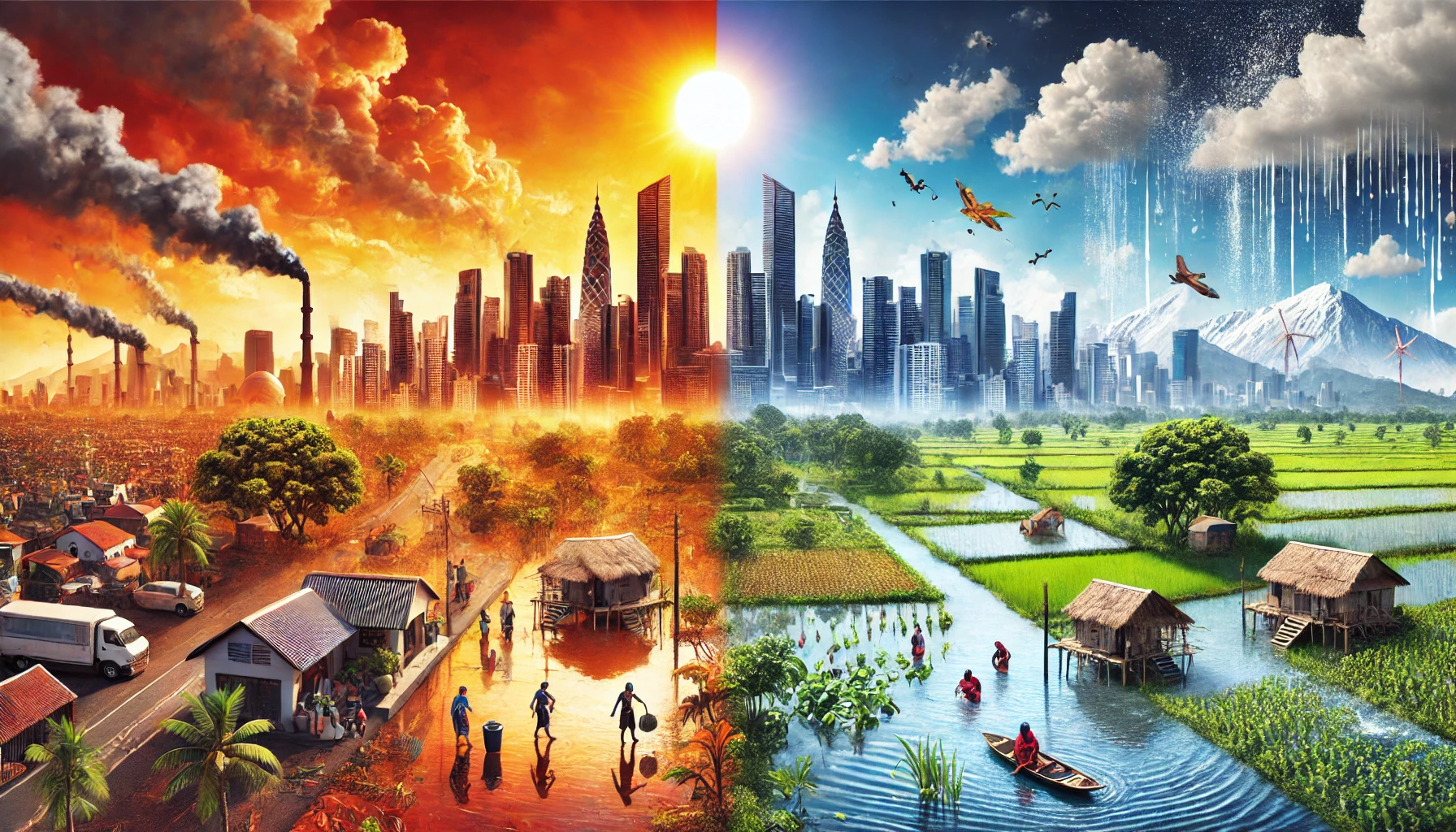Understanding Climate Vulnerabilities: The Impact of Heat and Floods on Poor Households
The World Bank's study on "Household and Firm Exposure to Heat and Floods in South Asia" reveals that poorer households and smaller firms are disproportionately affected by climate change, facing greater risks from extreme heat and flooding. The research underscores the urgent need for targeted policies to enhance resilience and support vulnerable populations in the region.

In the recent Policy Research Working Paper authored by Patrick Behrer, Jonah Rexer, Siddharth Sharma, and Margaret Triyana from the World Bank's Office of the Chief Economist for the South Asia Region, the authors investigate the differential impact of climate change on households and firms in the region. This area is increasingly affected by extreme weather events, specifically heatwaves and floods, which disproportionately impact poorer households that lack the resources to adapt or recover effectively. The study highlights the vulnerabilities of these populations in the context of climate change, as well as the potential consequences for economic growth and development in the region.
Analyzing Exposure to Extreme Heat
The paper employs spatially detailed data to analyze the exposure of households to climate shocks, specifically using the Relative Wealth Index (RWI) as a proxy for household wealth. This index allows for a nuanced understanding of how different socio-economic groups experience environmental stressors. The findings reveal a clear pattern: poorer households are exposed to more extreme heat than wealthier households. In urban areas, where infrastructure and resources differ significantly, the exposure is particularly pronounced, with low-income neighborhoods experiencing more recurrent flooding. The authors emphasize that the average maximum temperature in South Asia is around 30 degrees Celsius, which is already a critical threshold for occupational safety. Predictions indicate that rising temperatures will exacerbate these conditions, leading to increased mortality, decreased labor productivity, and heightened economic challenges for those already living in precarious situations.
Flooding Risks and Wealth Disparities
The study also delves into the relationship between wealth and flooding exposure. It finds that, in urban contexts, households with lower wealth are at greater risk of flooding. The authors note that between 2000 and 2018, urban areas experienced an average of 2.2 flood events, whereas rural areas faced around 1.5 floods. Interestingly, the analysis suggests a reversal in the relationship in rural areas, where wealthier households are actually more exposed to flooding. This phenomenon can be attributed to geographical factors, where wealthier households may occupy more fertile floodplains conducive to agriculture, which, while risky, also provides long-term economic benefits.
The Impact on Small Firms
The implications for firms, particularly small and informal businesses, are equally concerning. The authors examine firm-level data from the Economic Census of India and find that smaller firms are more exposed to the adverse effects of climate change, such as heat and flooding. For instance, the analysis indicates that non-agricultural firms located in hotter regions tend to employ fewer workers. Specifically, firms situated in areas with average temperatures of 33-34 degrees Celsius have about 0.25 fewer employees compared to those in cooler areas. This relationship is especially significant in urban environments, suggesting that smaller firms struggle to maintain productivity and scale in the face of climate stressors.
Mechanisms of Climate Impact and Poverty
The authors further explore potential mechanisms underlying these disparities in exposure. One significant factor is residential sorting, whereby wealthier individuals relocate away from high-risk areas, leaving poorer households in less desirable, hazard-prone locations. This dynamic creates a vicious cycle where repeated exposure to climate risks can trap poorer households in a state of vulnerability, limiting their ability to recover and adapt. The study notes that the poor often rely on informal employment and microenterprises, which lack the resilience to withstand economic shocks brought about by extreme weather events.
Moreover, the findings align with broader literature suggesting that climate change disproportionately affects low-income populations. As heat stress increases, it poses a direct threat to labor productivity, particularly in sectors reliant on outdoor work. The authors also point out that natural disasters such as floods can devastate local economies, reduce agricultural yields, and disrupt education, further entrenching cycles of poverty.
A Call for Comprehensive Policy
The paper highlights the urgent need for comprehensive policies aimed at addressing the intertwined challenges of climate change and economic inequality in South Asia. The authors advocate for targeted interventions that enhance resilience among vulnerable populations, particularly in urban areas, while also supporting small businesses to adapt to the changing climate. Effective strategies might include improving infrastructure in flood-prone areas, enhancing access to resources for adaptation, and fostering policies that promote equitable urban development. As climate change continues to escalate, understanding and addressing these vulnerabilities will be crucial for fostering sustainable economic growth and ensuring that development efforts are inclusive and effective. The research contributes valuable insights into the complexities of climate exposure, emphasizing the critical link between poverty alleviation and climate resilience, urging policymakers to consider these dimensions in their strategies moving forward.
- READ MORE ON:
- climate change
- heatwaves
- Relative Wealth Index
- flooding
- FIRST PUBLISHED IN:
- Devdiscourse
ALSO READ
Water is ‘canary in the coalmine’ of climate change: WMO
North Macedonia Faces Potential Economic Losses of 4% GDP by 2050 Due to Climate Change, Warns World Bank Report
Climate Change and the Fury of Hurricane Helene: A Stark Warning
Sporting a Green Future: Sports Industry's Role in Combating Climate Change
Stuart Horne Appointed New Zealand’s Climate Change Ambassador










